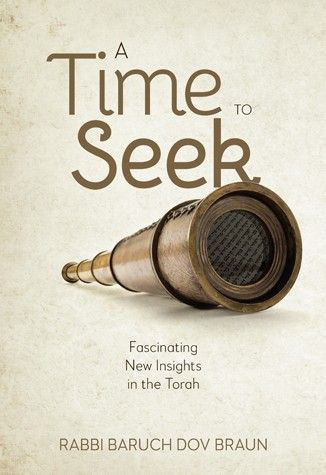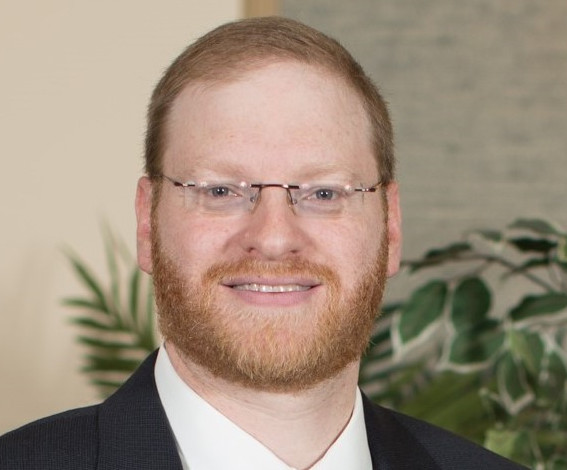Before Pesach, a literary visit to an Egyptian zoo
This week I continue to focus on the scholarship of Rabbi Baruch Dov Braun of DRS High School of Woodmere, with “A Visit to the Egyptian Zoo,” thematically keyed to the upcoming Pesach festival of freedom.
According to Rabbi Braun’s teachings, “When Moses is asked by G-d to confront Pharaoh and redeem Am Yisrael, he demurs because of his inability to speak clearly. … Yet 40 years later, he delivers one of the greatest speeches ever given. …
“The midrash attributes the dramatic change in Moshe to the healing effects of the Torah’s language. … What emerges from this midrash is that the Torah doesn’t simply tell us what to do, but provides us with a language with which to make sense of the world and communicate that understanding to others.”
A Visit to the Egyptian Zoo
By Rabbi Baruch Dov Braun
Not too long ago, the London Zoo hosted a special exhibit: homo sapiens. The exhibit, which lasted four days, displayed three male and four female homo sapiens (actual people!) next to their primate “relatives,” separated by an electric fence. As with all zoo exhibits, a sign educated visitors about the species’ diet, natural habitat, worldwide distribution, and the threats to its survival. A spokeswoman for the London Zoo, Polly Wills, explained the impetus behind the exhibit. “Seeing people in a different environment, among other animals,” Wills said, “teaches members of the public that the human is just another primate.”
The group of eight was chosen from an online contest that drew 30 candidates. At the exhibit they were seen relaxing in the sun, at play with balls and hula hoops, and eating. Rest assured, they were, of course, allowed to leave and go home at closing time. One of the participants, Tom Mahoney, 26, was inspired to get involved in order to generate more sympathy and support for our fellow primates. “A lot of people think humans are above other animals,” Mahoney said. “When they see humans as animals, here, it kind of reminds us that we’re not that special.”
This pervasive and pernicious view, that we are not fundamentally different than animals, is not a new one. It has plagued and hindered mankind for millennia. It’s an attitude that existed in Egypt, and one expressed by Pharaoh himself. However, before we get to Pharaoh, the human at the center of the story of Egypt, Let us begin with the animals.
The fourth plague suffered by the Egyptians was arov, wild animals. “If you don’t send My people,” warns Hashem, “I will send the swarm of wild beasts (arov); and the houses of Egypt shall be filled with the swarm (ha’arov), and even the ground upon which they are.” The Be’er Yosef was bothered why Moshe uses the term “arov” to express the coming of wild animals. Why doesn’t Moshe name the plague directly, the way he does by dam, tzefardeia, and kinim? Why doesn’t Moshe simply warn Pharaoh that if he doesn’t let the Jewish people go, Egypt will come under the attack of chayos ra’os (wild beasts)?
This isn’t the only difference between this plague and the ones that precede it. Only here does Hashem stress that, with this plague, a clear distinction will emerge between the Egyptians and Jews: “And on that day I shall set apart the land of Goshen upon which My people stands, that there shall be no swarm there; so that you will know that I am Hashem in the midst of the land. … I shall make a distinction between My people and your people —tomorrow the sign will come about!”
The problem with this idea is that all the previous plagues similarly differentiated and discriminated between Egyptian and Jew. Unlike the Egyptians, the Jews had untainted water to drink. No frogs pestered them. No lice infested them. There were already so many differences: Why would Hashem single out the plague of arov as an indicator of difference between the Egyptians and Jews?
In parashas Bereishis, Rav Shimshon Raphael Hirsch is bothered why Hashem designates humans with the name, “Adam.” Ostensibly, the name is linguistically derived from the word “adamah,” and since man was formed from the dust of the earth, humans are fittingly called, Adam. The problem with this approach, says Rav Hirsch, is that animals, too, emerged from the adamah. Because of this difficulty, Rav Hirsch is compelled to find some other etymological source for the word, adam. The Netziv, Rabbi Naftali Zvi Yehuda Berlin, however, resolves Rav Hirsch’s dilemma without altering the meaning of the word adam.
When Hashem creates man, the Torah records, “Then Hashem, G-d, formed man out of dust from the ground.” Rashi, quoting the midrash, comments that when Hashem gathers dust from the ground to form man, He gathers it from all four corners of the earth. The Netziv explains that the midrash is conveying a fundamental difference between man and animal: Animals are designed to inhabit a specific environment, a particular habitat. Man, on the other hand, is not limited to a specific environment. While it is true that animals were formed from the earth, each species was formed exclusively from the earth of their respective habitats. Man, in contrast, was fashioned from the earth of all the various surfaces, heights, and climates of the globe. Consequently, man, alone, is uniquely “the creature of the adamah,” and rightfully called, Adam.
This fundamental distinction between man and animal can help us appreciate the uniqueness of the fourth plague, arov.
The Be’er Yosef suggests that Moshe uses the word arov, which literally means a mixture, to describe the plague, because the novelty of the plague was not the manipulation of wild beasts but the swarming of wild beasts, an effect created by the mixture of diverse species of animals. During arov, various species — the lion, polar bear, anaconda, etc. — each one needing its own distinct habitat to survive, converged on a single location, Egypt, with its unique environment only suited for particular creatures.
Hashem, though, doesn’t miraculously enable the animals to survive despite Egypt’s climate. Rather, the plague will affect “even the ground upon which the animals are.” It is fascinating to note that when the wild animals converged on Egypt, the conditions of their natural habitat came with them. For example, ice and cold followed the polar bear and a tropical climate followed the anaconda. Not only did the wild animals ravage the population and produce, the sudden and drastic climate change destroyed the land of Egypt, too.
In light of the Netziv’s insight above, it follows that Hashem’s elaborate scheme is executed not merely to damage the land of Egypt, but to drive home a devastating message to the Egyptians and Pharaoh.
When Moshe first encounters Pharaoh and delivers Hashem’s message to let His people go, Pharaoh responds, “Who is Hashem, that I should hearken to His voice to let Israel go? I know not Hashem, and moreover I will not let Israel go.” The midrash understands that Pharaoh’s response is not only an expression of impudence, but of actual ignorance. Pharaoh, says the midrash, had a book cataloguing all the known deities, but when he searched the book upon Moshe’s arrival, there was no entry for Hashem. Some explain the meaning of the midrash on a figurative level: Hashem is a different kind of G-d, fundamentally unlike the types of deities Pharaoh’s culture worshipped. If one were to catalogue all the gods into a book, for the sake of internal coherence, Hashem would be intentionally left out. Because He is conceptually different, Hashem needs His own book.
Polytheism is a system of local deities. The idolatrous Egyptians, by serving their local gods, limit themselves to a specific habitat. By doing so, they make themselves out to be like animals, no different than other primates, and divest themselves of the name Adam. Hashem, however, is a transcendent G-d. He is One and He is everywhere. Consequently, His people who serve Him are not limited by a specific environment, but can live anywhere. His people, therefore, are truly Adam. This fundamental distinction between us and pagans is alluded to in Sefer Yechezkel, which states, “Now you, My sheep, sheep of my pasture — you are Adam; I am your G-d.” The Gemara infers from the pronoun, “you,” that only you, Bnei Yisrael, are called, Adam; pagans, however, are not called, Adam.
Arov is singled out as being the plague that differentiates between Egyptians and Jews because its design — the swarm and mixture of various wild animals that descended on the Egyptians, each one accompanied by the conditions of its own natural habitat — taught its victims in a vicious way, that they, indeed, were not special. They behaved like animals and, thus, were no different than them. The Jews, however, were very different.
Troughout the ages, despite the fact that we have been scattered throughout the four corners of the earth, we have survived and thrived. Every time we have had to go to and settle in some place, only to pick up again and leave to another place on the globe — from Babylon to Shushan to Berlin, to Paris, Montreal, and New York — we have demonstrated that Hashem, our G-d, is everywhere. There are shuls and batei midrash everywhere we have been, proof that we can maintain a close, personal, and unique relationship with our transcendent G-d, anywhere. For, we are Adam. We are not just another primate. We are indeed special.
The navi, Yechezkel, in the same perek quoted above, using the same imagery and metaphor of a shepherd and his flock, continues: “For thus says my Lord, Hashem: Behold! I am here, and I shall seek out My sheep, and I will investigate them.
As a shepherd tends his flock on the day that he is among his scattered sheep. so I will investigate My sheep and rescue them from all the places where they were scattered on the day of clouds and darkness. I shall bring them out from the nations and gather them from the lands and bring them to their ground. Upon good pasture I will shepherd them, and upon the heights of Israel’s mountains their fold will be. There they will lie down in a good fold and upon fat pastures they will graze on the mountains of Israel.”
Despite being flung to all four corners of the earth, Hashem promises us that from all of our scattered places, He will gather us and bring us back to our most suitable habitat, to our homeland, the Land of Israel.

 62.0°,
Partly Cloudy
62.0°,
Partly Cloudy 







